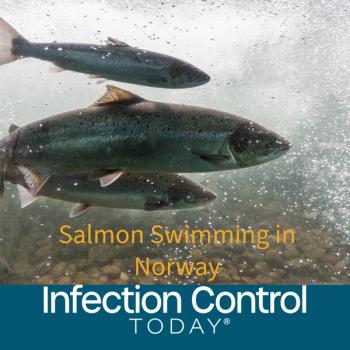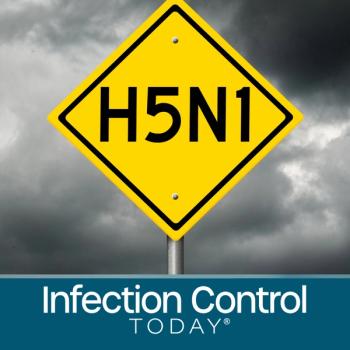
Creating a Safer Environment for Healthcare Providers: Focus on Personal Protective Equipment
By Sylvia Garcia, RN, MBA, CIC
If you’ve been a healthcare worker for a long time you may remember the first documented case of HIV transmission to a healthcare worker. It happened to Barbara Fassbinder, RN, in 1986 after the cuts from a weekend of gardening left her hands vulnerable to infection.1 While caring for an emergency room patient she was asked by a doctor to remove an intravenous catheter and applied pressure with a piece of gauze to the puncture wound for about 10 minutes. She did not wear gloves because it was not the standard in 1986.
Because of hers and other healthcare workers’ willingness to come forward, the healthcare arena learned that human immunodeficiency virus, a disease with certain mortality in 1986, was able to be transmitted through contact of infected blood with non-intact skin. In December 1991, the Occupational Safety and Health Administration (OSHA) promulgated the Bloodborne Pathogens standard. This standard is designed to protect workers from the risk of exposure to bloodborne pathogens, including but not limited to HIV. It requires protection of healthcare workers from exposure to bloodborne pathogens through implementation of control measures â including proper selection, training, and use of personal protective equipment (PPE) that many healthcare workers take for granted today.
In 2014 when two nurses were infected with Ebola, healthcare facilities rushed to ensure that they had personnel trained in use of specialty PPE to care for these highly infectious patients. There was renewed attention to availability and selection of appropriate PPE as well as training and competency of staff who might take care of these patients. Funds were appropriated and released by the federal government to ensure medical facilities were prepared and available to take care of these patients.
Now, in 2019, these funds are in their last year and many are wondering how we will protect our healthcare workers from the latest outbreak of Ebola. What facilities must realize is that these funds were never meant to ensure that basic infection control procedures that every healthcare worker should know and will be following are in place. The requirement that includes providing and ensuring compliance with PPE is part of the “cost of doing business” and was expanded in 1994 when OSHA’s Personal Protective Equipment for General Industry, 29CFR 1910.132, went into effect. OSHA’s General Industry standard applies when the PPE deemed necessary to protect workers from infectious disease does not fall under coverage of the bloodborne pathogens standard.2 For example, it would include PPE needed to protect healthcare workers from antibiotic-resistant organisms.
Type of PPE chosen could impact the exposure risks to employees. The FDA has a role in in regulating personal protective equipment including surgical masks, medical gloves, and gowns. Their requirements vary depending on the specific type of PPE. Ensuring that chosen PPE follow FDA regulations can provide reasonable assurance that the device is safe and effective.3
The order of gown removal also impacts the risk of organism transmission. A recent article by Okamoto, et al. assessed the impact of errors related to removal of PPE on healthcare worker contamination with multidrug-resistant organisms.4 They found that healthcare workers made multiple doffing errors and those that made the errors were more likely to have contaminated their clothing following interaction with a patient in isolation for a multidrug-resistant organism. Healthcare workers were also found to be at greater risk of hand contamination if they removed gloves first.
Proper selection and use of PPE are essential to the safety of our number one resource in healthcare â our employees! It is not enough to buy gowns, gloves and masks. Employees must be able to choose that appropriate PPE for the anticipated exposure as well as don, doff and appropriately discard or decontaminate it if reusable.
Facilities must ensure that they are following all law and regulations related to infection prevention and control (LD.04.01.01) to achieve and maintain Joint Commission Accreditation.
How many times have we seen a healthcare worker:
-- put on gloves that are too small and likely to leak or tear?
-- not wear eye/face protection during a procedure where splashes could occur or during an emergency resuscitation?
-- wear an “isolation gown” when a fluid resistant gown is indicated because of the likelihood of exposure to fluids?
-- not wear an isolation gown or other required PPE into the room of a patient on isolation precautions?
-- remove their PPE in a manner that could result in their or other people’s exposure?
These behaviors place employees and patients at risk of disease transmission.
While performing their annual infection control risk assessment, it is recommended that facilities review compliance with OSHA requirements related to selection and use of personal protective equipment to determine if further action is needed to comply with regulations.
Requirements that employers of individuals who have the possibility of exposure to bloodborne pathogens or other infectious agents must enforce, include:
-- Perform a hazard assessment to determine situations in which exposure could occur and identify the situations where risk of exposure could be mitigated or reduced by using PPE.
-- Determine the type of PPE and the circumstances during which they should be used.
-- Provide PPE in the sizes and locations where exposures could occur.
-- Train personnel on when and how to use PPE as well as the limitations of its use.
Organisms such as vancomycin-resistant enterococci and methicillin-resistant Staphylococcus aureus can live for an extended time on cloth.5 In addition to protecting healthcare workers from exposure to bloodborne pathogens, the appropriate selection and use of PPE will protect healthcare workers from contamination with multidrug-resistant organisms. This, in turn, could protect patients from hospital acquisition of these organisms.
Because we recognize the risk and expect compliance with applicable regulation, use of PPE is an area that the Joint Commission will be focusing on during our journey to Leading the Way to Zeroâ¢!
Sylvia Garcia, RN, MBA, CIC is the director of infection prevention and control in the Division of Healthcare Improvement. In this role, she is responsible for the oversight of infection prevention and control for the Joint Commission. She has more than 30 years of experience in infection control in hospital and long-term care settings, as well as eight years of clinical microbiology experience. Most recently, she served as the director of infection control at University of Chicago Medicine and was also an intermittent consultant for Joint Commission Resources for 10 years.
References:
1. Hanink B. Barbara Fassbinder, the First Healthcare Worker to Contract HIV. https://www.workingnurse.com/articles/Barbara-Fassbinder-the-First-Healthcare-Worker-to-Contract-HIV/. Accessed April 14, 2019.
2. Fairfax RE. OSHA letter to Vivian Ericksen, January 19, 2010. Standards Interpretations. Bloodborne Pathogens Standard, OSHA's Personal Protective Equipment Standard. https://www.osha.gov/laws-regs/standardinterpretations/2010-01-19/. Accessed April 14, 2019.
3. Food and Drug Administration. Personal Protective Equipment for Infection Control. Last updated 5/16/2018. https://www.fda.gov/medicaldevices/productsandmedicalprocedures/generalhospitaldevicesandsupplies/personalprotectiveequipment/default.htm/. Accessed April 19, 2019.
4. Okamoto K, Rhee Y, et.al. Impact of doffing errors on healthcare worker self-contamination when caring for patients on contact precautions. Infection Control and Hospital Epidemiology. 2019. https://doi.org/10.1017/ice.2019.33/. Accessed April 19, 2019.
5. Neely AN, Maley MP. Survival of enterococci and staphylococci on hospital fabrics and plastic. J Clin Microbiol. 2000;38(2):724â726.
Newsletter
Stay prepared and protected with Infection Control Today's newsletter, delivering essential updates, best practices, and expert insights for infection preventionists.






